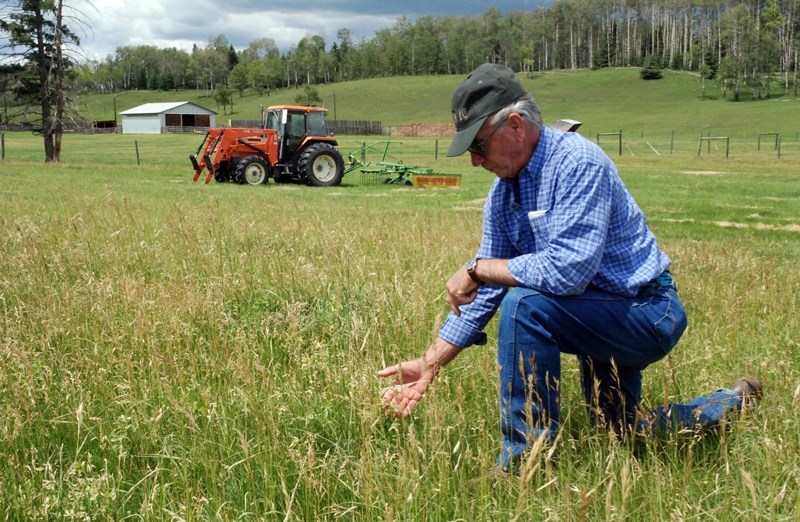A number of agricultural producers submitted claims following intense weather over the Canada Day long weekend, when certain parts of the province were affected by strong winds, heavy hailstorms and even funnel clouds.
“There were definitely clients who reported some damage,” said Nikki Booth, a spokesperson with the Agriculture Financial Services Corporation.
She added producers have five days from any weather event to file a claim, and that AFSC was anticipating additional claims when she spoke with the Gazette on Wednesday, July 6.
During the late afternoon of Sunday, July 3, Environment and Climate Change Canada said a severe thunderstorm moved through Flagstaff County and that a reliable report had been received regarding a tornado touching down near Hardisty at about 4:20 p.m., although the vortex was short-lived. Many other severe weather reports were received from the July 3 storms, including hail in Sundre that measured up to 50 millimetres.
In terms of hail, approximately 400 claims alone had come in throughout the province after the long weekend. To date this season, which goes back to the end of March, there have been about 1,800 hail-related claims provincewide, said Booth.
Mountain View County is located in Parkland, which is one of four regions outlined by AFSC. The Parkland region stretches from Camrose down to Drumheller and all the way over to Oyen and Provost. The Southern region goes from the Balzac-Calgary area down south. The Central region starts at Leduc and reaches up to Athabasca, and the North region covers the rest of the province heading north.
The Parkland region tends to get the largest amount of hail because of the nature of the types of storms that come through the area. The region made up about 900 of the hail claims received throughout the province so far this season, said Booth.
“You guys are in the hail belt,” she said.
“The reason we have hail endorsement is because hail can decimate a crop quite quickly.”
But the crop insurance corporation offers a wide variety of plans, including coverage for moisture deficiency as well as damage caused by waterfowl and wildlife. With all the different kinds of insurance programs combined, there have been approximately 5,000 claims to date this season — roughly 1,900 of which came from Parkland, she said.
“Our insurance programs are there to protect producers from circumstances beyond their controls, such as dry conditions as we saw last year or flooding and hail,” she said.
Every situation is different and there is no average or typical claim — each must be assessed on a case-by-case basis by an on-farm inspector. The extent of damage caused by strong winds or hail depends on the type of crop and where it is at in its growth cycle, she said.
Despite a lack of moisture at the start of the growing season combined with recent wild weather, crop conditions are faring better than last year, she said.
“It was looking a little dry at the beginning, but we've (since) had so much rain,” she said.
The precipitation that has been recently coming down in the province has helped improve soil moisture conditions, she said, calling this growing season to date fairly average.
“Hopefully it's a relief for some of those producers,” she said.
Of course the situation could quickly change later in July and August, which typically get the most hail, she said.
“We're always a bit at the mercy of Mother Nature,” she said.
However, concerns that the dry start to the season might yield an abundance of grasshoppers have at least largely been allayed, she said.
Last year's season also did not pan out quite as unfavourably as had originally been forecast. While AFSC had estimated paying out in 2015 anywhere between $700 and $900 million in claims, the total came in at about $506 million. However, that's not to say last season was not devastating for a number of producers, she said.
“That's why we stress the importance of our programs,” she said.
Farming is unpredictable, and producers never know whether they will have an average year, a bumper year or an awful year, she said.
“Our programs are there to give producers peace of mind, which is important given the important work they do,” she said.



